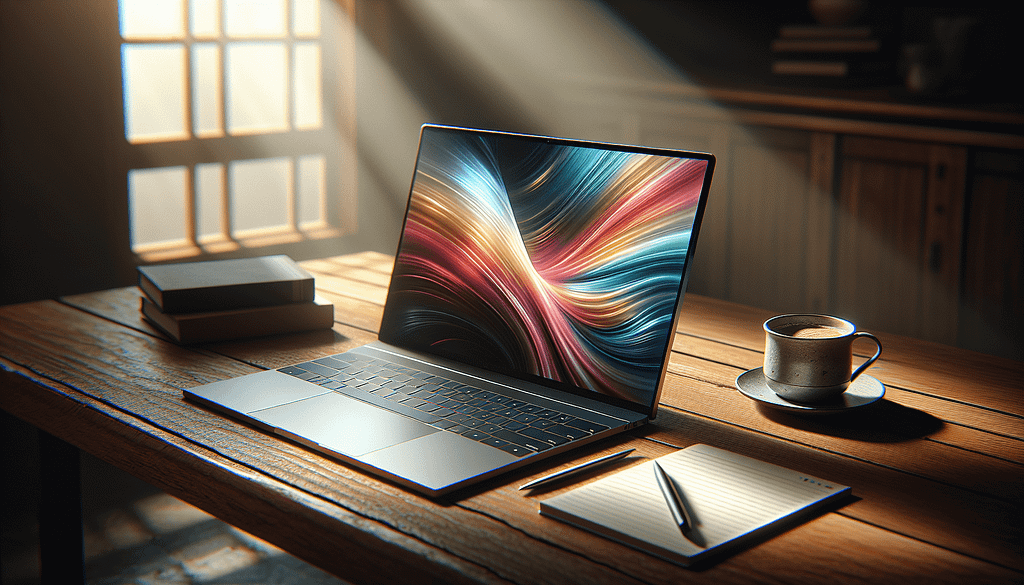Do MacBooks Last 4 Years? Durability Explained
Wondering if your MacBook will stick around for four years? Dive into this guide on durability, maintenance, and what makes these sleek machines last.
Do MacBooks Last 4 Years? Durability Explained
When you invest in a MacBook, you’re not just buying a piece of tech; you’re committing to a lifestyle — a unique blend of creativity, productivity, and, let’s face it, a touch of status. But, like any relationship, you might find yourself wondering, “Will this last? Can I count on my MacBook to stick around for at least four years?” Well, pull up a chair, maybe grab a coffee, and let’s dive into the world of MacBook durability.
Understanding MacBook Lifespan
First off, let’s get one thing straight. The lifespan of a MacBook isn’t simply a matter of time — it’s a complex equation involving usage, maintenance, and, yes, a sprinkle of luck. Most studies and user experiences suggest that a well-maintained MacBook can last anywhere from four to six years before starting to show signs of age. But, what are the factors that contribute to this range?
Apple designs its laptops to be both aesthetically pleasing and robust — after all, that sleek aluminum casing isn’t just for looks. But beauty and durability aren’t always on the same wavelength. Let’s explore together what really determines the lifespan of your device.
The Build Quality of MacBooks
When you lay eyes on a MacBook, you can’t help but appreciate its sleek design. This isn’t just a pretty face, though. Apple utilizes high-quality materials — mostly aluminum — giving these laptops rigidity and a premium feel. Unlike some competitors that settle for plastic shells, the solid build of a MacBook is a significant factor in its long-term durability.
This sturdy construction helps protect against everyday wear and tear. So, if you accidentally drop your MacBook (we’ve all been there), it stands a much better chance of surviving unscathed compared to a more fragile laptop. Of course, this doesn’t mean your laptop is invincible. A drop from too high can do some serious damage — still, the robust framework gives you a fighting chance.
Performance Longevity
You might be aware that Apple is not just about hardware; it’s also about software. Each MacBook is designed to work harmoniously with macOS, allowing for smoother operation and better performance over time. Regular updates ensure that your system stays efficient and secure, which plays a significant role in how long your MacBook will remain usable.
However, as software evolves, it often demands more from your hardware. After four years, you might find your MacBook lagging behind when trying to run the latest applications. Thankfully, the MacBook’s strong initial performance can keep you satisfied for a while. If you’re planning to use your laptop mainly for browsing, word processing, or streaming, you’ll likely get past the four-year mark without feeling too much strain.

Battery Life and Performance
Ah, the battery — the lifeblood of any portable device. Apple’s laptops are known for decent battery life, but like all batteries, they age. The common expectation is that a MacBook battery will start to lose its capacity after a few hundred charge cycles. By the four-year mark, you may find yourself tethered to a power outlet more often than you’d like, particularly if you’re a heavy user.
It’s essential to keep an eye on battery health, and luckily, Apple makes it easy to check. Regularly recalibrating your battery by letting it fully charge and discharge will extend its life as well. Just remember to avoid extreme temperatures — your MacBook isn’t a fan of hot and cold extremes. Treat your battery well, and it just might stick around for that extra mile.
Regular Maintenance
Just like a car, your MacBook needs regular checkups. While they may not require oil changes, you should perform routine maintenance to ensure longevity. Keeping your system updated with the latest software patches, cleaning your hard drive, and even clearing out dust from the internals can greatly enhance performance.
Also, if you’re the meticulous type, consider using protective covers or sleeves. They can prevent scratches and minor dents, which can lead to more serious damage over time. Unintentional mishaps happen, but with proper care, you can prevent them from becoming catastrophic.

The Role of Upgrades
Depending on which model you choose, some aspects of a MacBook can be upgraded, but it’s not as straightforward as it is with other brands. For instance, some older models allowed you to increase RAM or replace the hard drive, which could extend their usability. However, newer MacBooks feature soldered components, meaning they’re less flexible for upgrades.
When considering a new MacBook, it may be wise to opt for higher specifications upfront — more RAM and storage can provide a more future-proof experience. Although it comes with an increased initial cost, think of it as investing in an extended relationship with your trusty laptop.
The Impact of Usage
Let’s be honest: not all MacBooks are created equal when it comes to lasting power. How you use your MacBook will significantly impact its lifespan. If you’re a casual user who primarily browses the web and streams videos, you might find that your computer holds up beautifully over the years.
On the other hand, if you’re a graphic designer working with heavy software like Adobe Creative Suite, your MacBook will be under more strain. In this case, ensuring it’s continually running optimally becomes crucial.
Common Issues Over Time
As much as we love our MacBooks, they aren’t without their quirks. Users often experience common problems over time, such as keyboard issues, trackpad malfunctions, or display failures. While Apple is typically responsive to repairs, the cost for out-of-warranty repairs can add up fast.
It’s wise to familiarize yourself with the standard problems associated with your specific model. Taking proactive measures such as keeping drinks away from your laptop and using external peripherals can mitigate some headaches.
The Apple Ecosystem Advantage
One of the greatest perks of owning a MacBook is its seamless integration with the Apple ecosystem. If you’re already using an iPhone or an iPad, the continuity features add real value. Handoff, AirDrop, and universal clipboard can enhance your workflow dramatically.
This ecosystem not only provides a more enriching user experience but also creates an environment that encourages longevity. Whether it’s through iCloud backups or syncing settings, these features keep your work alive and accessible regardless of what happens to the hardware.
What the Users Say
You might not think of yourself as a sociologist, but peeking into the experiences of others can paint a clearer picture. MacBook users’ reviews can range from raving about their machines lasting over six years to tales of woe from earlier models with battery problems.
Take a stroll through forums and you’ll notice that user experiences vary based on how they take care of their devices. Regularly weeding through these stories can prepare you for what’s typical and what’s a red flag.
Environmental Impacts of Longevity
In this day and age, environmental considerations are more than just a nod to political correctness; they’re essential. The longer your device lasts, the less electronic waste is produced. Apple has its own sustainability practices, striving for a circular economy. By ensuring your MacBook lasts for years, you’re also contributing to a more eco-friendly environment.
It’s heartwarming to think that your choice of tech can have positive global repercussions, isn’t it? Let’s champion longevity over the “next best thing,” not just for our wallets, but for Mother Earth too.
What About Repairability?
If you’re anything like me, the thought of potentially having to have your MacBook repaired fills you with dread. The reality is that while MacBooks are durable, like all machines, they’re susceptible to wear and tear over time. Apple’s proprietary parts can make repairs pricey, and the lack of easily accessible repair guides can exacerbate this.
Understanding what you’ll face can set you up for success by allowing you to budget for potential repairs. Familiarize yourself with basic troubleshooting strategies that can help you solve minor issues before escalating to professional aid.
Final Thoughts on Longevity
So, let me ask you again: Do MacBooks last four years? Absolutely! If you approach ownership with care and attention, your MacBook can well go beyond that. It’s not just about the quality of the laptop itself; it’s also about how you interact with it throughout its life.
With thoughtful maintenance, a reasonable usage pattern, and an understanding of the common pitfalls, you can enjoy your MacBook for years to come. Dare I say, it becomes a bit of a cherished companion? After all, just as any great relationship, it thrives with love, care, and — sometimes — a little patience.
As you sit there, wondering about the right decision for your next purchase or pondering how to extend your MacBook’s life, keep these insights in mind.
If you’ve enjoyed reading this and found it helpful, why not give it a clap? I’d love to hear your thoughts in the comments, and don’t forget to subscribe to my Medium newsletter for the latest updates. Your engagement means the world to me! Thanks for stopping by.
from Stories by Casenixx Phone Cases on Medium https://ift.tt/iGy6Pow
via IFTTT
Comments
Post a Comment